Bio152 Midterm 1
1/115
There's no tags or description
Looks like no tags are added yet.
Name | Mastery | Learn | Test | Matching | Spaced |
|---|
No study sessions yet.
116 Terms
Biogeography
the geographic distribution of living organism- does not appear random
similar species tend to be found geograpically close together
Common Ancestry
the concept that if you trace back the lineages of living species far enough in time, those species will converge to a shared ancestor
Supported by:
Similar species clustered in geographical areas even when there are other parts of the world that they would likely thrive in. Ex. Pengius only in the Southern Hemisphere
Homoogies are structures that have deep, underlying similarities between species
Studies of Fossils- transitional fossils
Nested Structure
Evolution
the change in frequency of genetic variants in a population
3 core ideas:
Common Ancestry unites all life
Populations will change
Change in populations over time is not random but is adaptive b/c of natural selection
Fixation
the loss of all variants except one from a population
probability of ____ is entirely dependent upon the starting allele frequency
small populations—> quicker ___
biggere populations —> slower ___
Homology
Traits whose similarities are explained by common ancestry
traits that are truly the same because they trace back to an evolutionary origin in a common ancestor
Ex. land vertebrates have similar forelimb bone structure, regardless of the function of that forelimb
Natural Selection
the tendency for genetic variants that enhance fitness to go to fixation and variants that reduce fitness to be lost from populations
whichever genetic variants make an organism better equipped for the pressures of their environemt will tend to inc. in frequency in populations over time.
Nested Hierarchy
a pattern of groups nested within groups (w/o overlaps) as seen in taxonomies
if taxonomic groups shared common ancestry at different times in the past, it is expected that taxonomies would be structured with groups within groups
Polymorphism
The existence of multiple variants within a population
Ex. one flower produces a single offspring with purple flowers due to a genetic mutation—> population with genetic variation
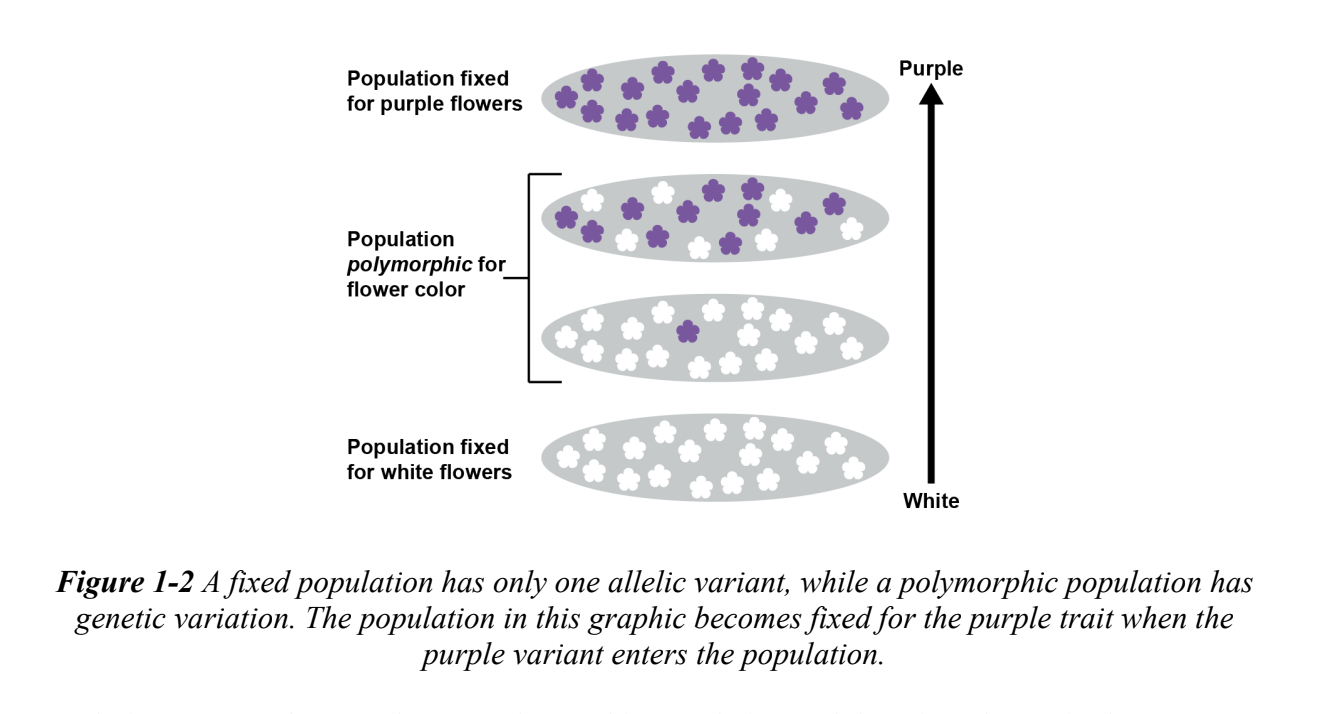
Transitional fossil
fossil taxa that have some, but not all, of the derived traits of living group
fossils tend to carry subsets of the traits found in living groups
Ex. some fossils shared similar characteristics to birds, like feathers and hllow bones, but lacked additional traits, such as wings
Branch
The lines that make up a tree diagram, which represent population lineages
Clade
All the descendants of an ancestral lineage
grouping of branches and tips
identify a chuck of the tree that can be removed from the root with a single cut
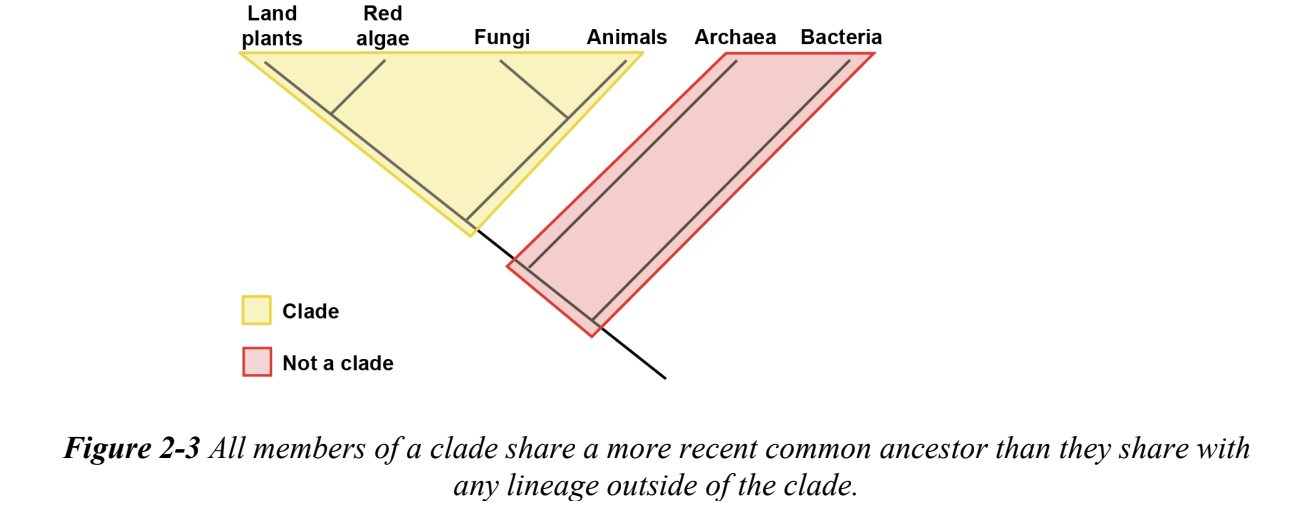
Lineage Splitting
A splitting of a pop. into genetically separate populations that no longer have gene flow
depicted at the nodes of a tree- separates two sister lineages
allow them to accumulate different traits
sometimes called speciation
Continous population that gets fragmented into two subpopulations by a geological or climate change process
large population on one land mass and a rare event resulting in a dispersal of some propagules to another land mass
Node
Branching points of tree diagrams, which represent lineage splitting
Phylogenetic Tree
A branching diagram used to represent evolutionary relationships and relatedness between different organisms based on their common ancestry
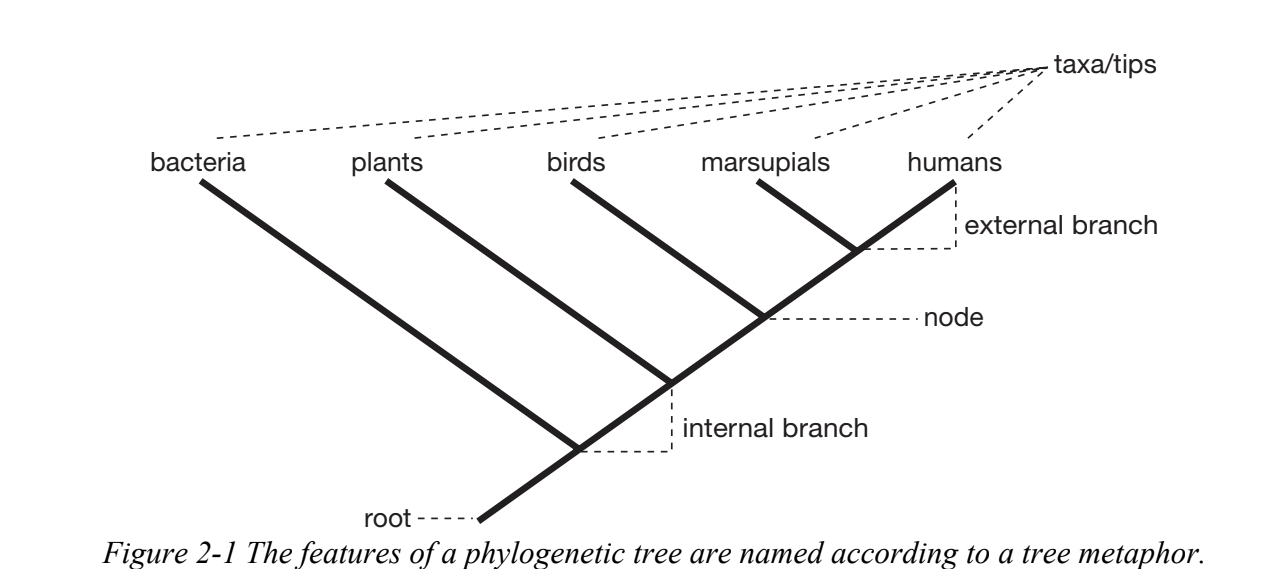
Pruning
Remove tips or clades from a tree w/o changing the topology
Root
The base of a tree, representing the common ancestral lineage of all taxa in the tree
Speciation
Lineage splitting that ultimately leads to taxa that are classified as separate species
can occur without geographic isolation with disruptive selection and assortative mating

Taxon (Taxa)
a named groups of biological organisms, often shown at the tips of a tree
Tree Thinking
the ability to use the metaphor of a phylogenetic tree to convey accurate evolutionary information
Tree topology
A list of all the clades that a tree contains
representation of relationships between the clades

Convergent evolution
the phenomenon observed in phylogenetic trees where the same trait evolves separately in more than one lineage; although they appear similar, these traits are not homologous
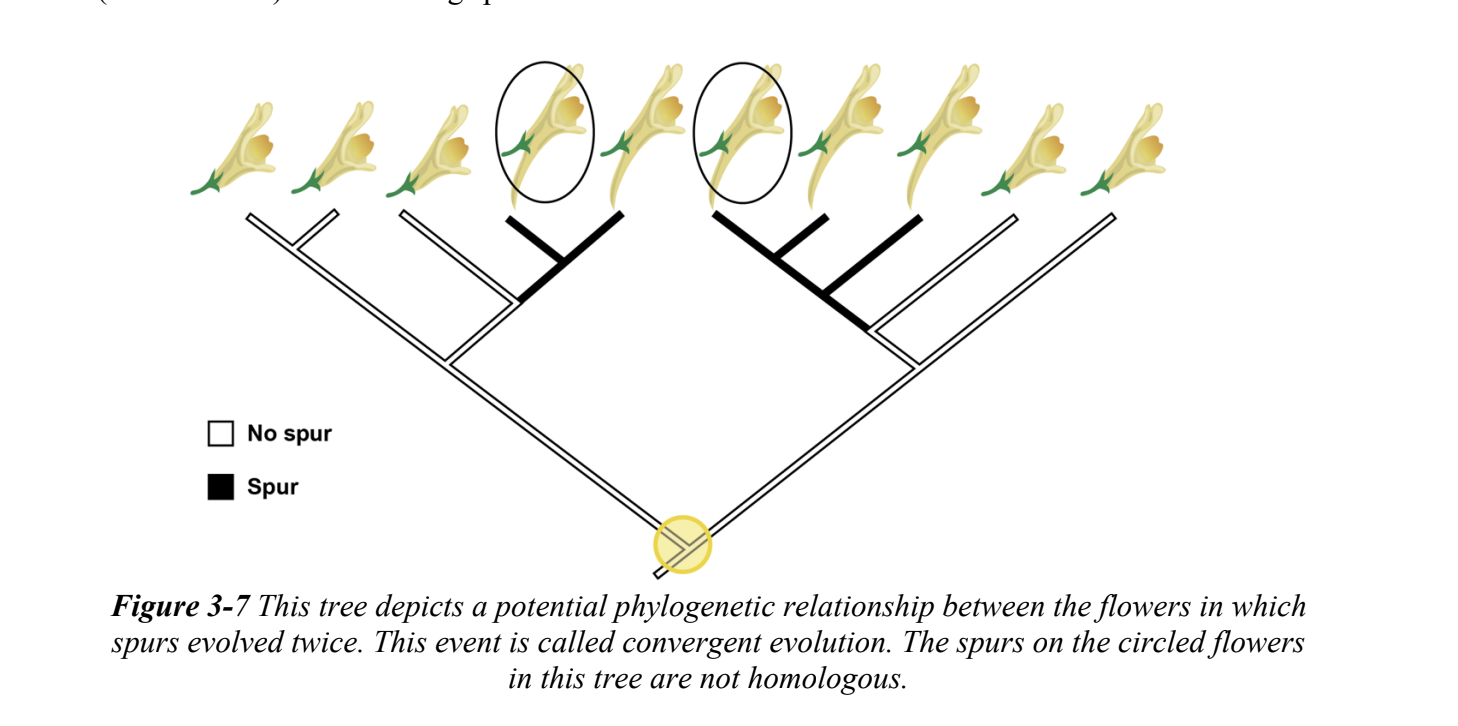
Homologus
A descriptor of a character shared in separate species that was inherited from the common ancestor of those species
Principle of Parsimony
the idea that given multiple alternative hypotheses, the most likely hypothesis is the one that makes the fewest assumptions; in relation to phylogenies, parsimony favors the scenario that invokes the min, number of evolutionary changes (charater loss/ gain)
Reversal
The phenomenon in which an ancestral trait was lost and then re-evolved along a lineage
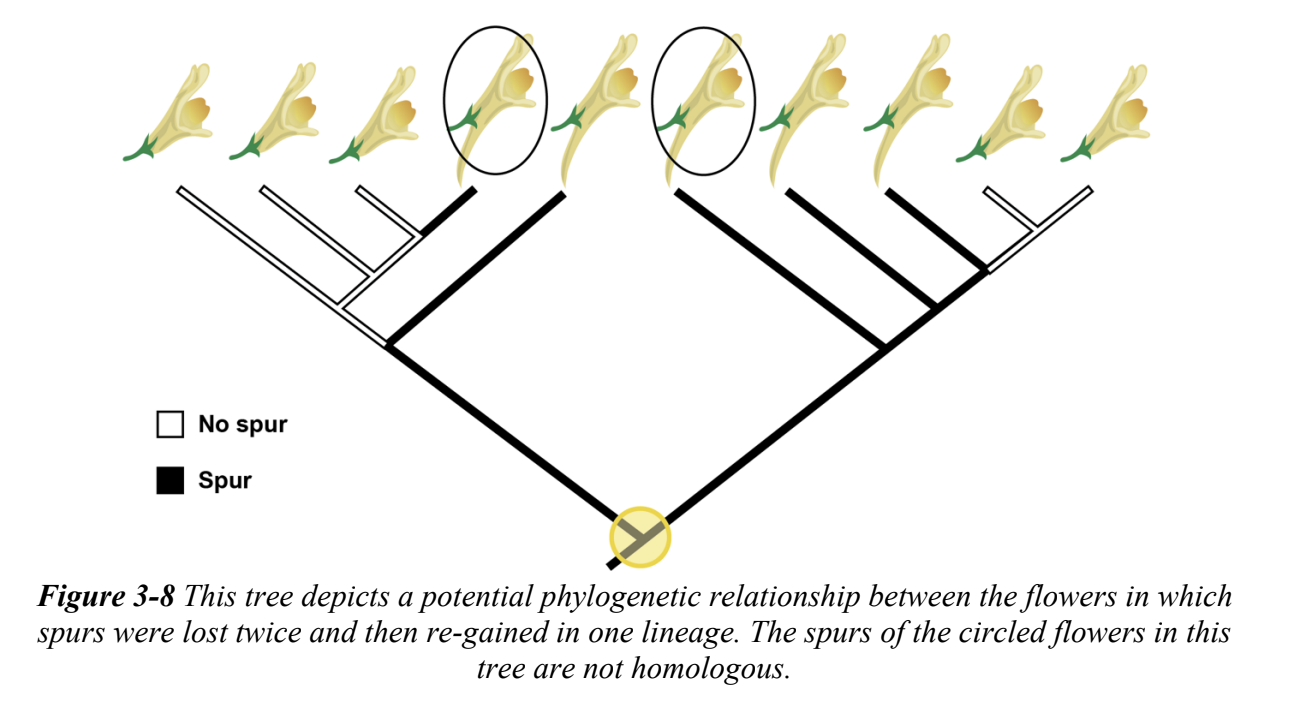
Separate ancestry
the alternative hypothesis to common ancestry, which proposes that each living taxon has an independent origin
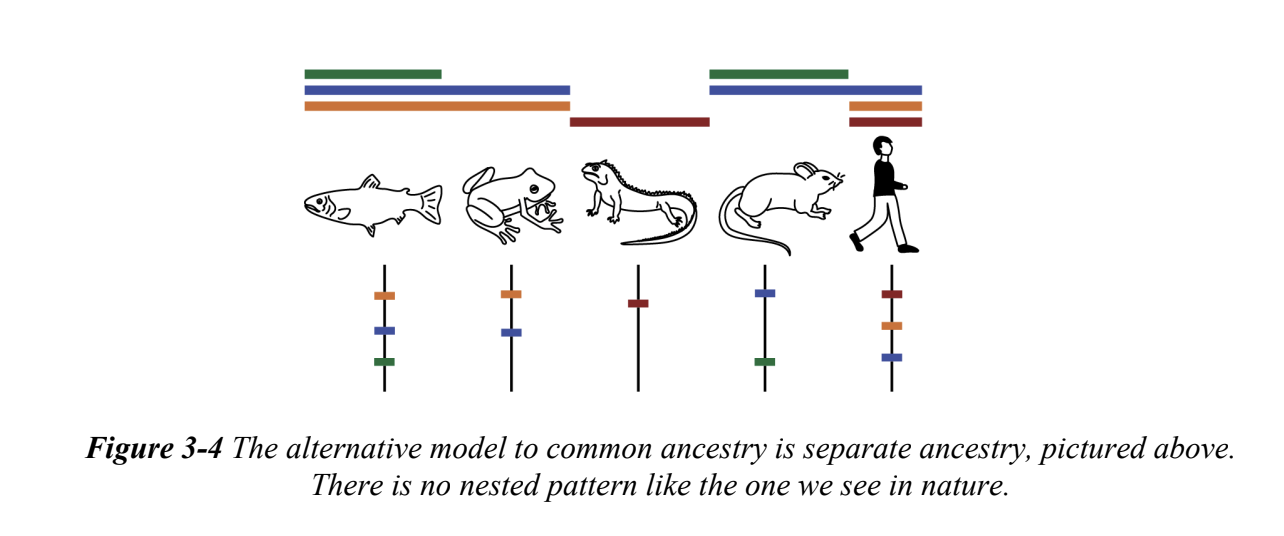
Allele Frequency
In a pop. the proportion of all alleles at a locus that are of a particular type
Allele
A particular variant of a gene
Diploid
The trait of having two sets of chromosomes, as in humans
Evolution
change in the genetic composition of a pop. over time
Fixed
an allele that has a frequency of 1.0 in a pop.
all other variants become extinct.
Purple variant became fixed
After fixation, evolution does not stop b/c new variants can arise (mutation)
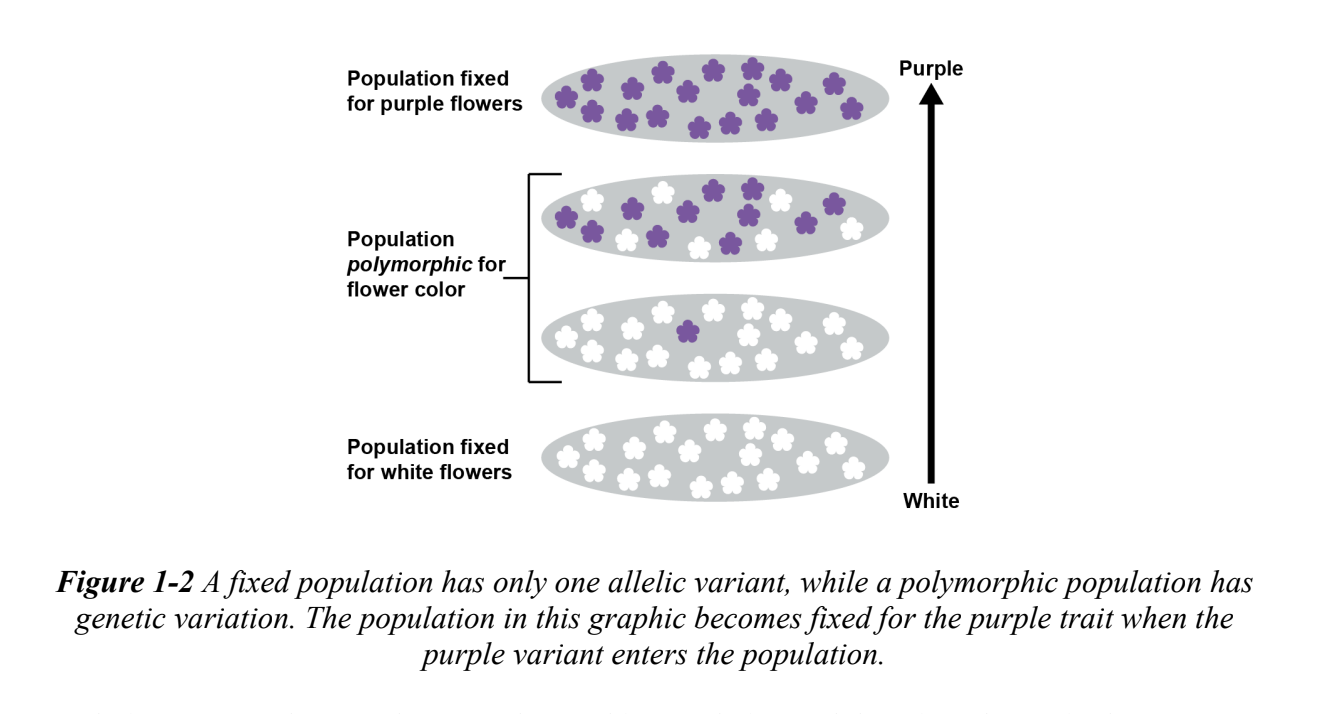
Genotype
genetic makeup of an organism
all the allels that organism has
Haploid
the trait of having one set of chromosomes in an organism
Hardy Weinberg Law
the law that, when a few key assumptions hold, makes it is possible to predict the genotype frequencies in a pop. for the next generation, based on the allele frequencies in the current generation.
No new allels emerge
mating happens randomly
all alleles have equal fitness
population is infinitely large
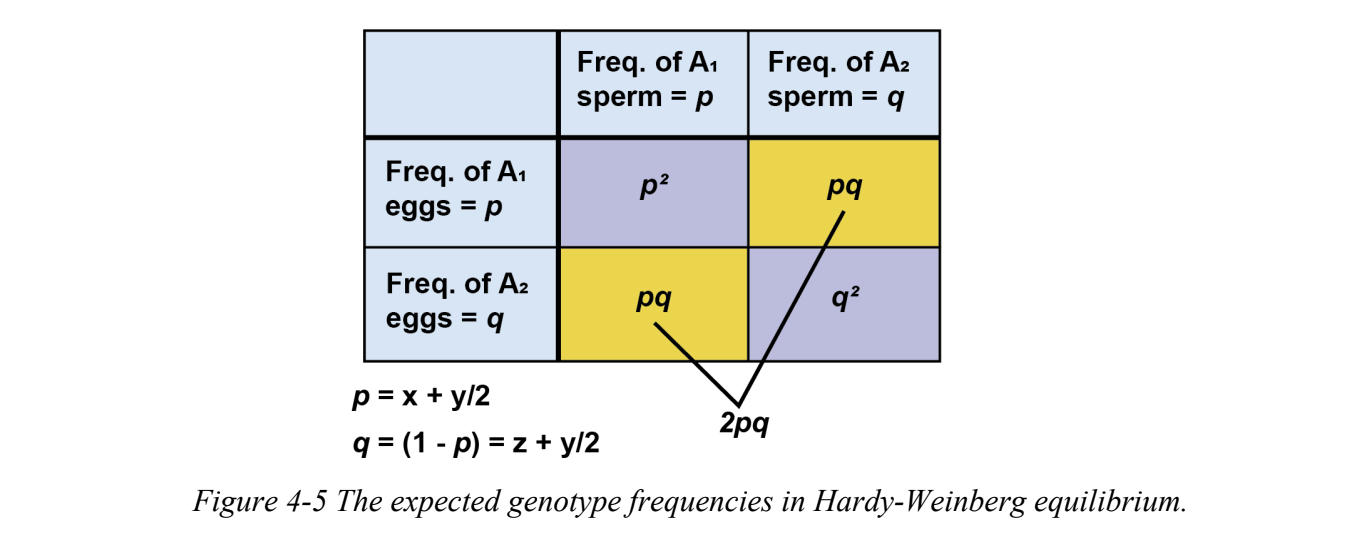
Locus
a place in the genome where alleles reside; in diploids, each individual has two alleles per locus
Phenotype
the physical and behavioral characteristics of an organism that result from the interaction of the organism’s genotype and its environment.
Polymorphic
when more than one allele is found at a given locus in a pop.
Populations
a groups of interbreeding organisms
Selfing
when an organism reproduces with itself, providing both the egg and sperm components.
Beneficial mutation
a new allele that enhances the fitness of organisms
rare
selection coefficients greater than zero
Deleterious mutation
a new allele that decreases organimsal fitness
phenotype is altered in some way that negatively impacts the organism’s fitness
selection coefficient (s) less than zero
Directional selection
selection that arises when one allele consistently raises fitness; eventually, the beneficial allele is expected to become fixed in the population
causes a directional trend favoring an increase in the freq. of a favored allele relative to all other allels
when a beneficial allele is rare in the pop., directional selection works more slowly than when the beneficial allele is dominant
tends to remove genetic variation from populations
Ex. Peppered Moth

Mutation
a change in a gene sequence; arises independent of the needs of the organism
rate will never be zero
occur frequently in a large population
constantly being added into populations
random- does not change when the environment changes
larger genes provide a bigger target to “hit” by a ____
Natural Selection
the process of allele frequency change due to fitness variation among genotypes at that locus
Neutral Mutation
a new allele with neither a beneficial nor a deleterious effect
common especially in organisms like humans, which have a large amount of non-coding sequences in their genomes
selection coefficient (s) of zero
Relative Fitness (W)
the fitness of a given genotype divided by the fitness of a reference genotype, which relative fitness is assigned to be 1.0
their proportional success or lack of success at surviving and producing offspring
Genetic Bottleneck
the phenomenon in which a population lineage shrinks to a small size for period, causing that pop. to lose genetic variation
often occur during migration, when a few founder individuals move from one populations to establish a new population
Genetic Drift
random change in allele frequencies in a pop. over time
allele frequencies are always changing
two alleles with equal fitness and each with a frequency of 0.5—> 50% chance of going to fixation
can overcome directional selection when allele starts at a lower frequency and pop. is small
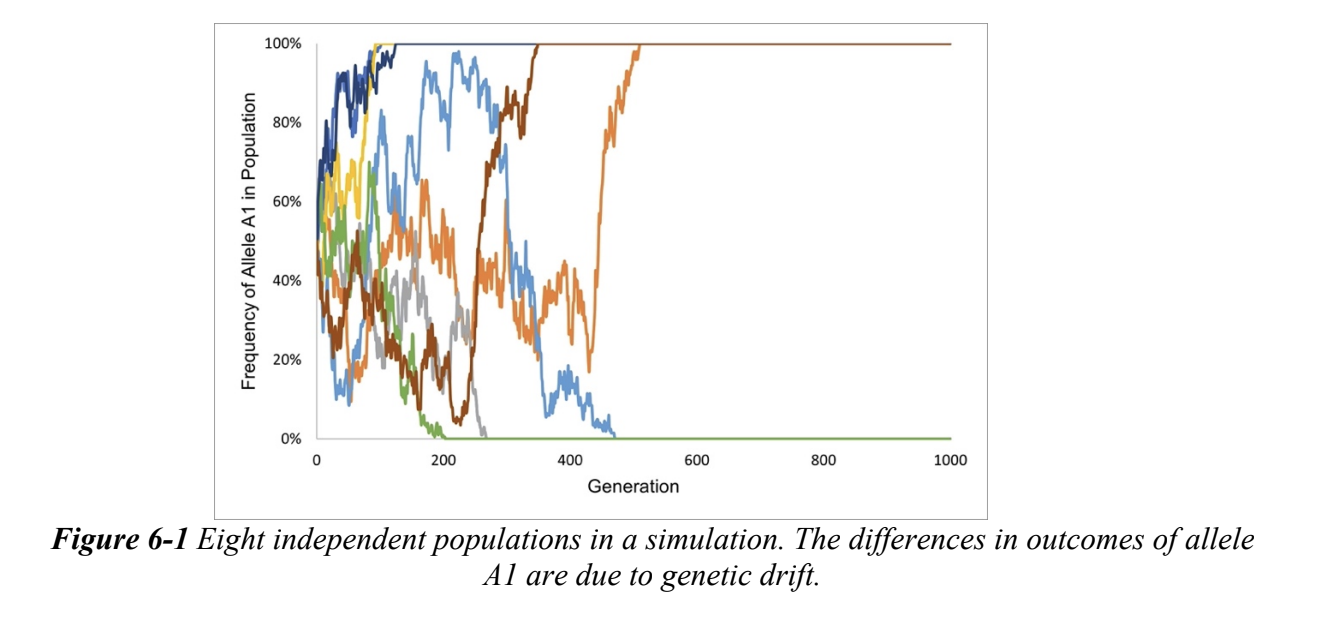
Genetic Load
the frequency of deleterious alleles that have accumulated in a pop.
Carrier
an individual who is heterozygous for a disease
rare disease alleles occur much more often as heterozygotes than as homozygotes
Overdominant selection
selection in which heterozygote genotypes have the highest fitness
single gene with two alleles (AA,Aa, aa)
reaches stable equilibrium: balanced polymorphism
prevents changes in allele frequency
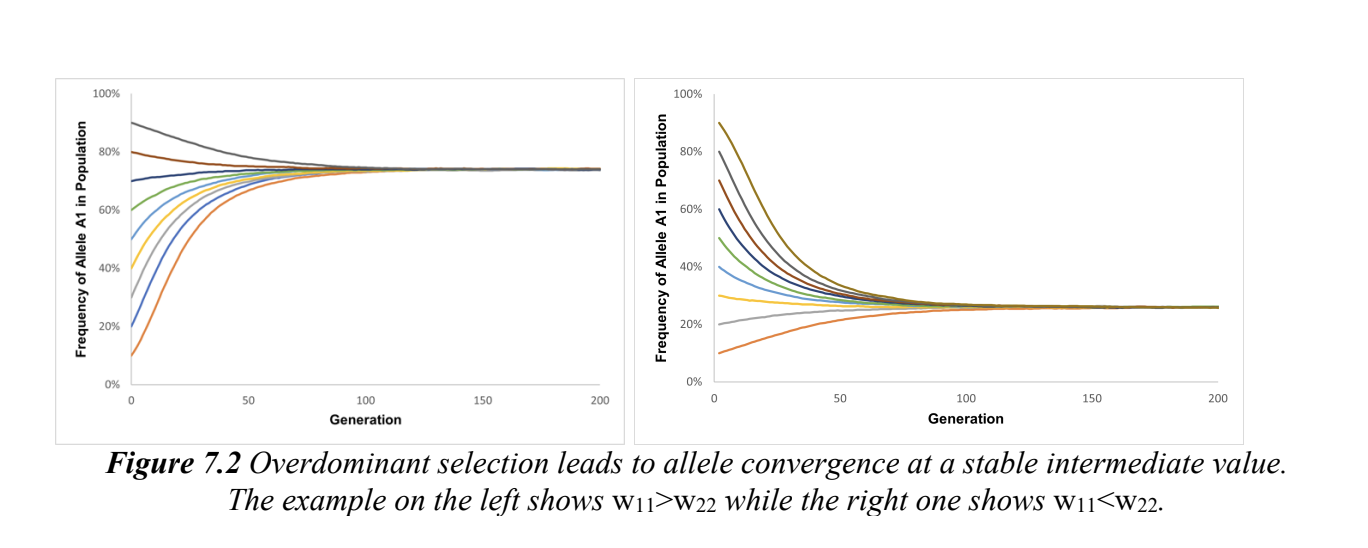
Trans-specific polymorphisms
A set of alleles that are shared between closely related species; they arose before speciation and were maintained as polymorphisms
Underdominant selection
Selection in which heterozygote genotypes have the lowest fitness
tends to favor whichever allele has the highest frequency
unstable equilibrium
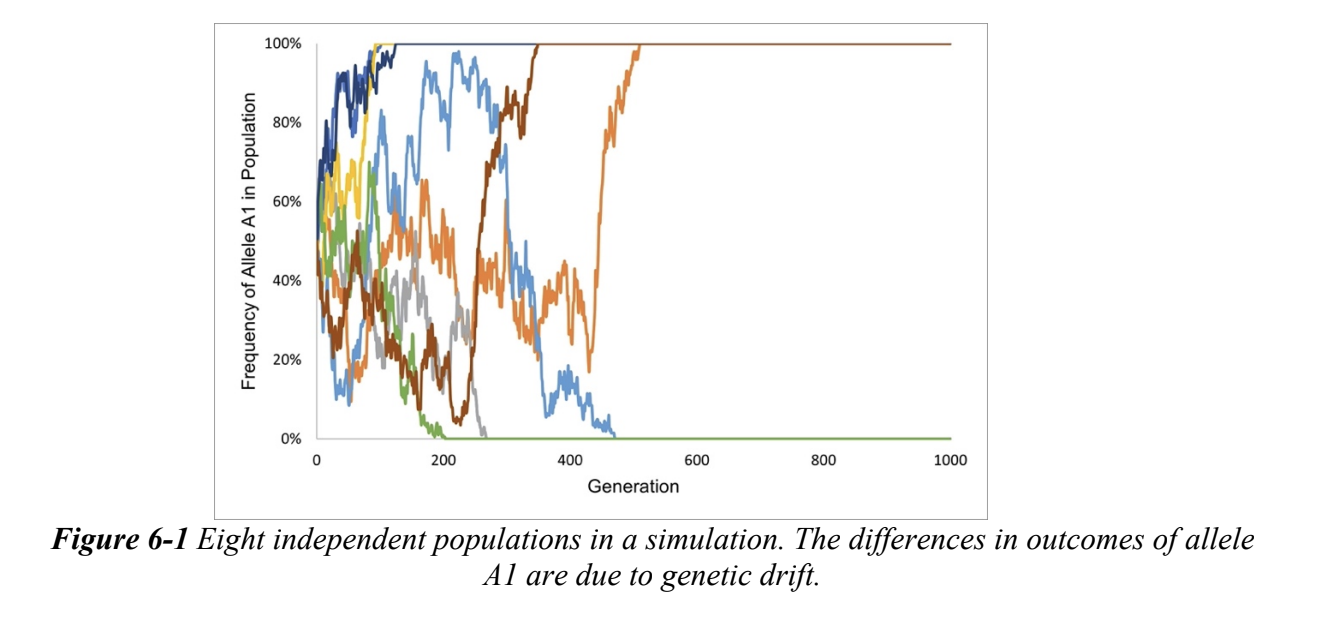
Continuous trait
A trait that is characterized by values on a continous scale, rather than being controlled by a single locus.
a range of variation
most populations have a trait value around the mean value and there are fewer indiviudals with trait values
Ex. height, weight, length and hair density
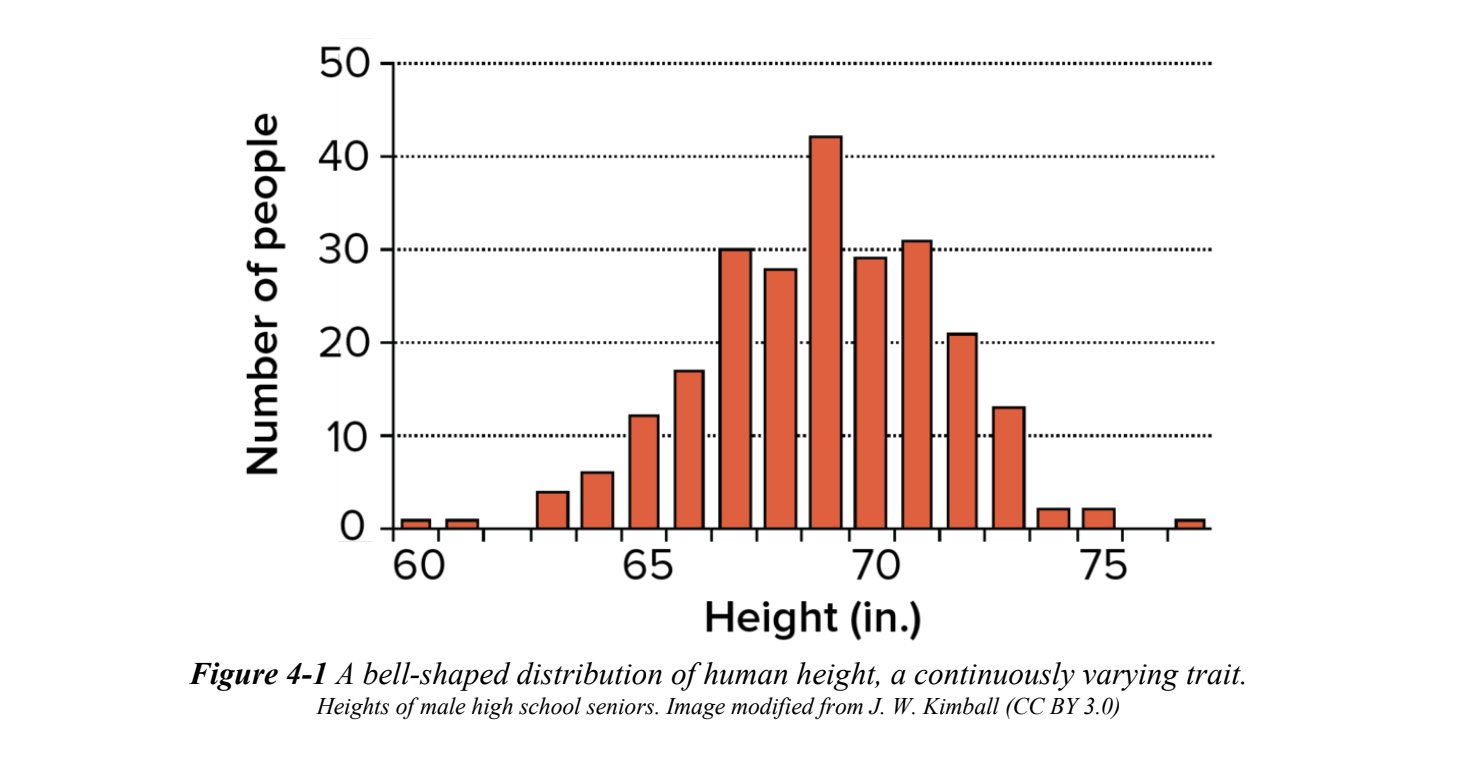
Disruptive selection
selection that favors trait values at both extremes of the trait value distribution
trait values at either extreme have a higher fitness than trait values nearer the mean
variance and SD increases over time
will still trait values near mean as long as there is random mating
Hertiability (h^2)
the fraction of the variation in a population that can be explained by genetics
Response to selection (r )
the amount the mean trait value in a population changes after one generation
subtract the mean of the parental generation from the mean of the offspring/selected generation
r= h²s
Stabilizing selection
selection that disfavors extreme trait values and favors trait values towards the center of the trait distribution
reduces the trait variation in the population
Ex. babies with either very high or very low birth weights have lower rates of survival than babies w/ moderate weight
Standard Deviation
square root of the variance
variance
A measure of the spread of the distribution of a trait values in a population (technically, the sum of the squared deviations from the mean value)
Altruistic behavior
actions (or tendencies to act) that result in the organism exhibiting the behavior lowering its own fitness while inc. the fitness of other organisms within its pop
Ex of altriusm in humans: charity, adoption, and service in the military
Exaggerated secondary sexual characteristics
dramatic traits in an organism that lower the organism’s viability but evolve because they are favored by sexual selection
all found in male
Ex. Male Peacock’s tail large and colorful
exaptation
phenomenon in which a trait that evolved for one function is currently used for a different function
fused collarbones is an _______ for flight
polygamy
the phenomenon in which one male can mate with many females
males tend to have a higher variance in reproductive success
runaway sexual selection
the phenomenon in which secondary sexual characteristics become exaggerated due to feedback between male traits and female preferences (or, more rarely, female traits and male preferences)
allopatric speciation
speciation driven by geographic isolation
assortative mating
the phenomenon in which individual organisms tend to mate with other organisms with trait values like theirs
Ex. spiders long-legged individuals would preferentially mate w/ one another.
biological species concept
the view that species are defined by the ability of their members to reproduce with one another and to be unable to reproduce with the members of other species
clinal variation
gradual changes in traits as a function of geographical separation
discrete variation
genetic variation among geographically separated populations, where each population contains genetically similar individuals
results when there are barriers to gene flow between the distinct areas, but realtively free gene flow within an area
recognize genetically differentiated local populations within a species as distinct subspecies, varieties, or biological races
extrinsic reproductive isolation
the phenomenon in which two organisms are unable to reproduce due to geographic separation
intrinsic reproductive isolation
the phenomenon in which two organisms are no longer able to reproduce, even when they encounter one another
phylogenetic species concept
the view that species are clades (monophyletic groups), like other in the taxonomic hierarchy (genera, subspecies, etc.), that biologists have chose to assign to the species rank for practical reasons
speciation
the splitting of an ancestral species into descendant species
sympatric speciaiton
speciation w/o geographical separation, driven by assortative mating within a population
population becomes internally by assortative mating so that there exisst two separate breed subgroups that can diverge and become separate species
Anoxygenic photosynthesis
reduction of carbon dioxide to organic molecules using light energy in which something other than water is the electron donor and oxygen gas is not released
use usually Sulfur
autogenous hypothesis for eukaryotes
theory that mitochondria and nucleus both evolved within the same eukaryotic lineage
the genomic material never evolved into linear chromosomes
phylogenetic tree should show that the mitochondrial genome is more closely related to eukaryotic nucleus than to bactera
cyanobacteria
clade of bacteria characterized by its ability to perform oxygenic photosynthesis
can be single-celled or form filaments of many cells
endosymbiosis
the phenomenon in which a prokaryotic cell comes to live and divide within a host cell
endosymbiotic hypothesis for eukaryotes
theory that mitochondria are derived from endosymbiotic bacteria taken up by the host cell whose genome is found in the eukaryotic nucleus
also explains the origin of chloroplasts
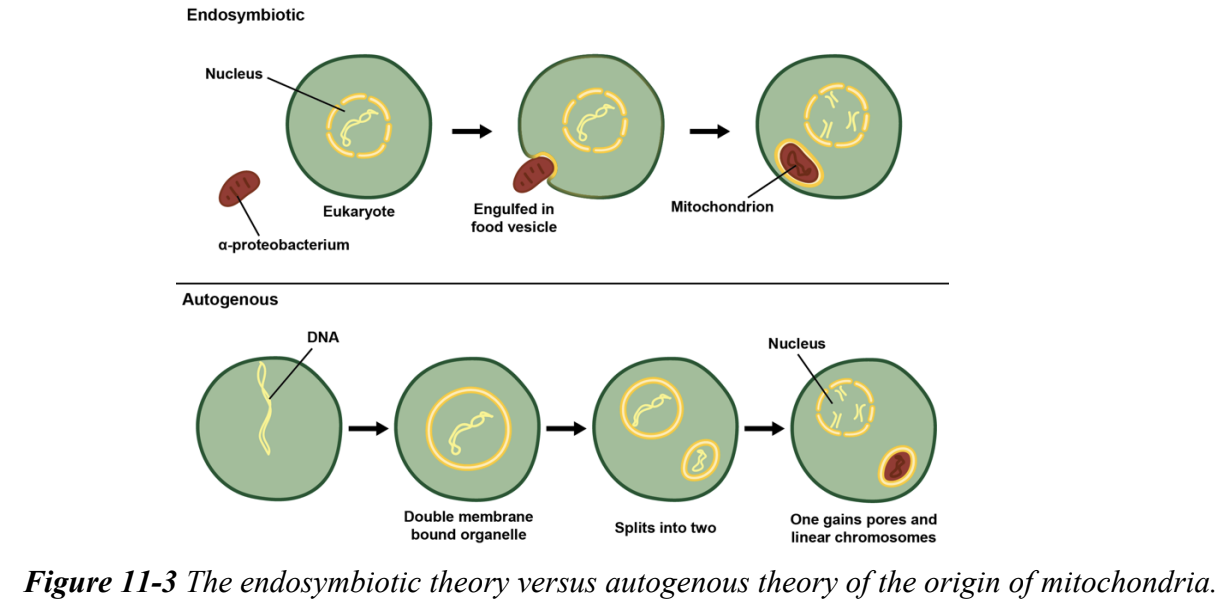
eukaryotic cells
a category of cells characterized by an outer membrane and many internal membrane-bound compartments including the mitochondria and nucleus
inside-out model
a theory for development of eukaryotic internal compartments that suggests that the outer plasma membrane of a prokaryotic ancestor was pushed outward and ultimately fused to create the cytoplasm and plasma membrane of eukaryotes
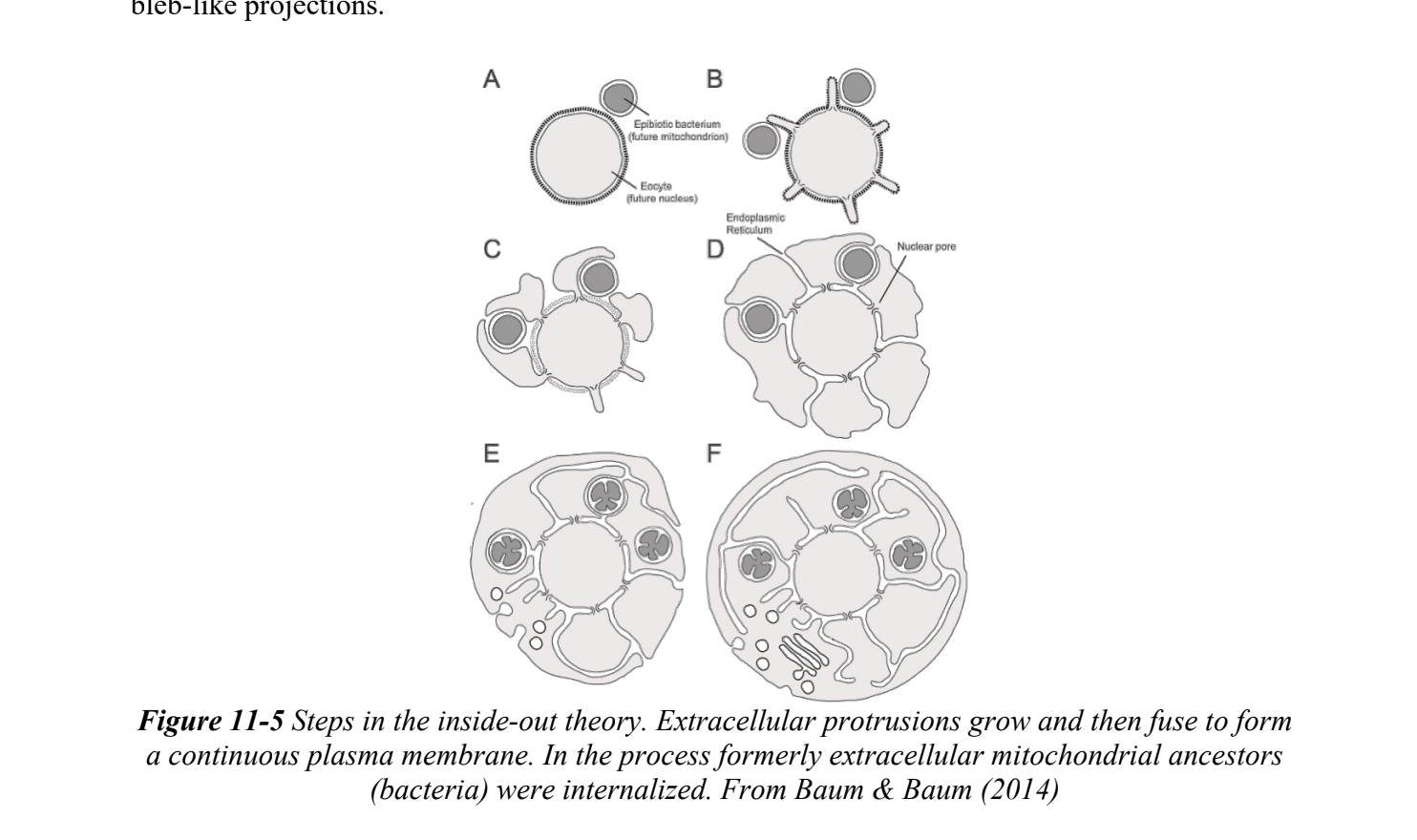
Last Universal Common Ancestor (LUCA)
most recent ancestor of all known life
last living thing that was ancestral to all known life
had features that are shared by bacteria, archaea, and eukaryotes
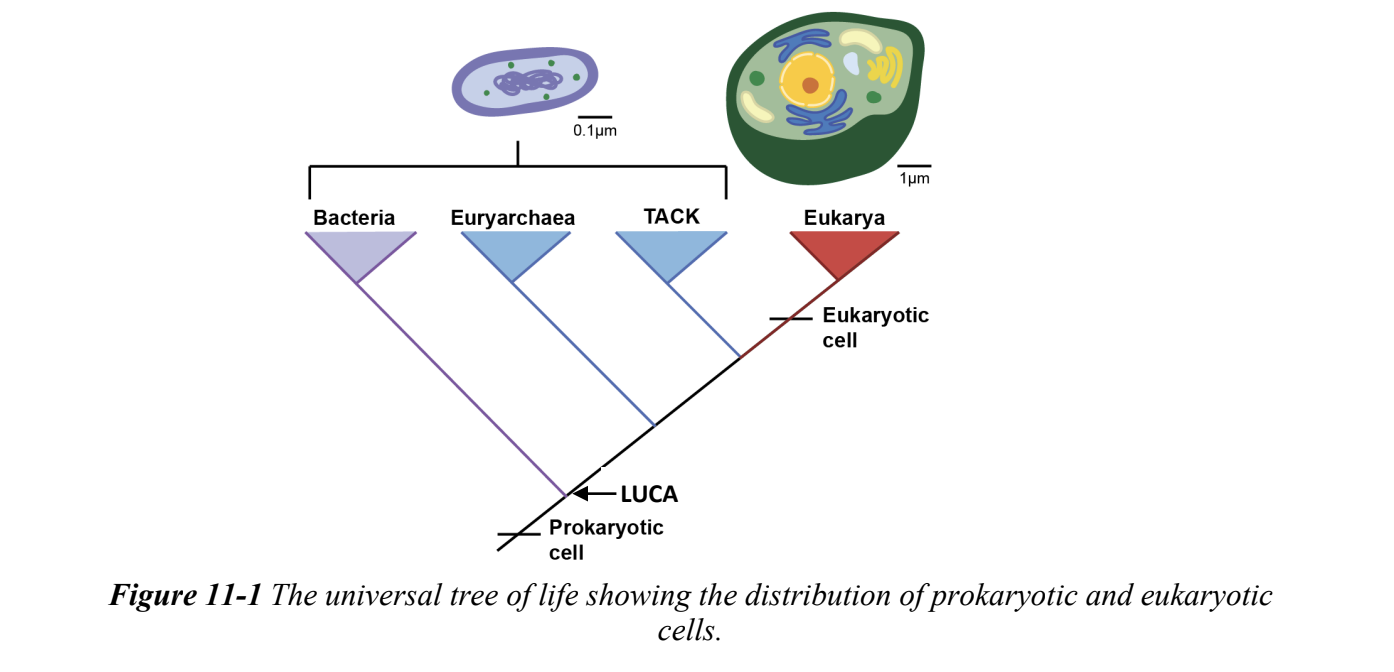
organelle
membrane-bound compartment of a eukaryotic cell that perform many various functions
Ex. nucleus
outside-in model
a theory for development of eukaryotes that starts with the production of vesicles within the cytoplasm by internalization
oxygenic photosynthesis
reduction of carbon dioxide to organic molecules using light energy in which water is the electron donor and oxygen gas is released
cyanobacteria is the only lineage that has evolved from this
originated ~2.3 billion years old
Prokaryotic cells
a category of cells characterized by an outer membrane containing no internal membrane structure
adaptive landscapes
visualizations of how selection acts on lineages over time
selection tends to push lineages onto the nearest fitness peak and that lineage will remain there until something changes
may be another peak that the lineage could occupy if it had the right set of phenotypes- would have to first experience a dec. in fitness
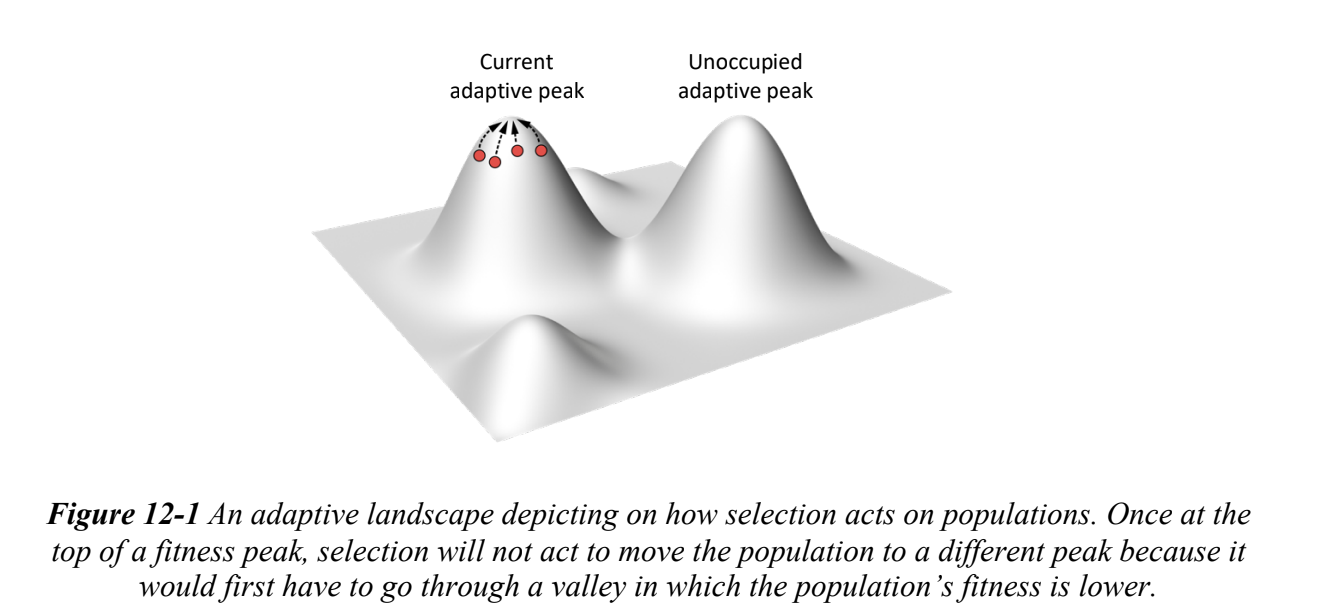
adaptive radiations
rapids expansions of clades to give rise to many diverse species adapted to different ecological niches
occur when a lineage undergoes a major transition that allows it to access some ecological space that was previously inaccessible
this lineage can now radiate into many species, each adapted to different eco
rare b/c stabilizing selection will mainatin adaptaions to the current adaptive zone
amniotes
a clade of tetrapods characterized by an egg that can persist on dry land, complex lungs, and protective skin
arthropods
a clade characterized by exoskeletons
wel adapted to life on land b/c their exoskeletons make them naturally resistant to desiccation
baleen
specialized filter-feeding structures found in whales
bilateral symmtery
trait of having a single plane of symmetry
aslo have three tissue layers, muscles, nerves
most modern animals are ______
key innovations is ability for organisms to search out food by moving around the environment efficiently
Cambrian Period
the first period of the Paleozoic Era; a time characterized by rapid radiation of bilaterians
began 542 million years ago
all bilaterian phyla appeared
Evolutionary Arms Race
a cycle of measures and countermeasures between interacting lineages
traits in females and traits in males keep evolving back and forth in reaction to one another resulting in extreme trait values
Exaptation
The re-purposing of the pre-existing trait for a novel function
Key Innovation
a trait that allows a lineage to occupy a new niche
Opisthokont clade
a clade of eukaryotes characterized by a flagellum
greek for “rear”
“whip” referring to the flagellum
Pre-adaptations
traits in a lineage that existed had prior to a transition that give that lineage some advantage in a new ecological niche
Radiations
Rapid expansions of clades to give rise to many species
Red Queen Principle
idea that populations must keep adapting via directional selection b/c other species with which they interact are also constantly evolving
Ex. thicker armor, optimal tooth size inc. and so on
